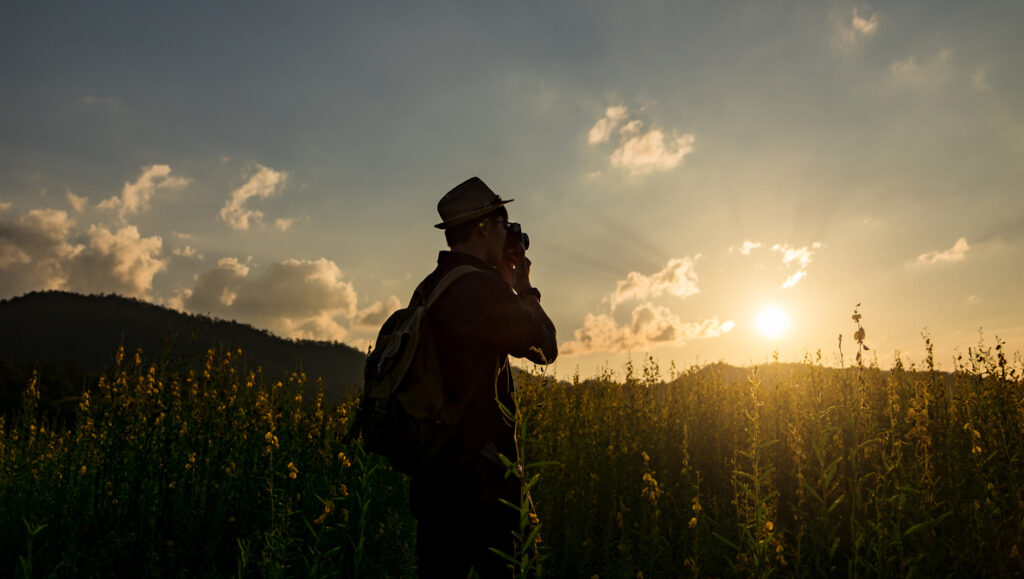
Silhouette of a young who like to travel and photographer, taking pictures of the beautiful moments during the sunset ,sunrise
UPDATE: Landscape photographers are urged to rethink their gear as new findings highlight 15 essential non-camera items that could make or break a photography expedition. As outdoor conditions can be unpredictable, these preparations are vital to ensure safety and success in capturing breathtaking landscapes.
The latest recommendations emphasize practical equipment that enhances survival and comfort during shoots in remote areas. Photographers are reminded that without proper preparation, even the most advanced cameras can’t guarantee success. Comprehensive gear lists are now more critical than ever as the photography community gears up for the outdoor season.
Among the top essentials is a robust 20,000mAh battery bank, allowing for multiple device charges during extended outings. This power source is crucial, especially in isolated terrains where battery depletion can lead to dangerous situations. Photographers are advised to choose models with several USB outputs to keep all devices charged.
Footwear also plays a significant role in landscape photography. Inadequate shoes can lead to injuries and discomfort, hindering mobility and creativity. Experts recommend selecting footwear with excellent ankle stabilization and waterproof construction to navigate rocky terrains and aquatic environments safely.
Moreover, the risks from ultraviolet radiation cannot be overlooked. Photographers are urged to wear high-quality UV protection gear to shield against harmful rays, which can be particularly intense at higher elevations or around reflective surfaces like water and snow.
Comfort is paramount for extended creative sessions. Portable seating options can transform long waits for the perfect shot into productive moments. Additionally, maintaining proper hydration and nutrition is crucial, as outdoor photography often requires more energy than anticipated. Experts suggest carrying energy-rich snacks and portable water purification systems to extend operational range.
In light of potential emergencies, a well-stocked first aid kit is essential. Photographers should include bandages, antiseptic solutions, and personal prescriptions, as minor injuries can escalate in remote areas where medical assistance is hours away.
Satellite communication devices have become vital lifelines, offering bidirectional messaging and GPS capabilities in areas lacking cellular coverage. These units ensure that help can be summoned swiftly in emergencies, a crucial safety measure for solo photographers.
As weather conditions are unpredictable, quality rain protection gear is essential. Photographers are advised to invest in durable jackets designed for active outdoor use, as the most stunning photographs often arise just before or during stormy weather.
To protect valuable equipment from moisture and particulate matter, multiple microfiber cloths should be included in every photographer’s kit. These cloths are indispensable for keeping lenses clean and ensuring optimal performance, especially in challenging environments.
Lastly, experts recommend preparing for financial emergencies. Landscape photographers are urged to carry cash in small denominations, as electronic payment systems may not work in remote areas. This ensures that unexpected expenses can be covered without hassle.
Landscape photography is not just about capturing images; it requires a comprehensive approach to preparation and safety. As Alex Cooke, a Cleveland-based photographer, emphasizes, “The photographer with comprehensive preparation focuses on creative expression rather than basic survival.”
For those committed to capturing nature’s most extraordinary moments, investing in the right gear will make all the difference. Stay tuned for more updates and tips on optimizing your photography experience in the great outdoors.





